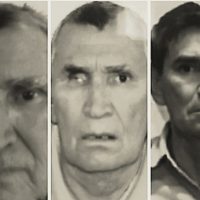In May 2025, the Balochistan independence movement reached a pivotal moment when Mir Yar Baloch, a prominent Baloch writer, journalist, and activist, declared the region’s independence from Pakistan, proclaiming it the “Democratic Republic of Balochistan.” This bold announcement, coupled with demands for a Baloch embassy in New Delhi and United Nations recognition, has thrust Mir Yar Baloch into the global spotlight, reigniting debates about Balochistan’s quest for sovereignty. Amid escalating India-Pakistan tensions and intensified Baloch Liberation Army (BLA) attacks, Mir Yar Baloch’s actions have shaken regional geopolitics, drawing attention to a decades-long struggle rooted in economic marginalization, cultural suppression, and human rights abuses. This article try to cover the answer “Who is Mir Yar Baloch?”, covering his personal background, the demands of the Balochistan freedom movement, and the latest developments as of May 14, 2025, while exploring the historical and geopolitical context of the conflict.
Who is Mir Yar Baloch?
Mir Yar Baloch is a Baloch writer, journalist, and activist who has emerged as a leading voice in the Balochistan independence movement. His real name is still not available in the internet. While specific personal details about his life are scarce—likely due to security concerns common among activists in conflict zones—his public statements and actions provide insight into his role and motivations.

Based on recent reports, Mir Yar Baloch is a respected figure within the Baloch community, known for his articulate advocacy through social media platforms like X and his engagement with international media. His declarations in May 2025, including calls for a sovereign Balochistan, have positioned him as a symbolic leader, though it remains unclear whether he holds a formal position within organized separatist groups like the BLA.
Personal Background
- Parents and Family: No verified information is available about Mir Yar Baloch’s parents or immediate family. This lack of detail is typical for activists in Balochistan, where publicizing personal information could endanger relatives due to Pakistan’s alleged use of enforced disappearances and extrajudicial measures against dissidents. It is reasonable to infer that Mir Yar Baloch comes from a Baloch family, likely influenced by the region’s history of resistance against perceived state oppression. His advocacy for equal rights, including for women, suggests a progressive outlook, possibly shaped by a family environment that values education and social justice, though this is speculative.
- Origin: Mir Yar Baloch hails from Balochistan, Pakistan’s largest province by area, which borders Iran and Afghanistan. Ethnically Baloch, he belongs to an Indo-Iranian group with a distinct language (Balochi) and cultural heritage. Balochistan, covering 44% of Pakistan’s landmass but home to only 6% of its population, is rich in resources like gas, oil, and minerals, yet remains underdeveloped, fueling grievances that Mir Yar Baloch has leveraged in his activism. His tribal affiliation is not specified, but prominent Baloch tribes like the Bugti, Marri, or Mengal often play a role in the region’s politics and insurgency.
- Education and Career: As a writer and journalist, Mir Yar Baloch likely has a background in literature, media, or communications, enabling him to craft compelling narratives for the Baloch cause. His proficiency in engaging international audiences, particularly through X posts, suggests familiarity with global political discourse. His work focuses on exposing alleged Pakistani state atrocities, including air bombings, enforced disappearances, and genocide, as he stated in a May 14, 2025, post.
The Balochistan Independence Movement
To understand Mir Yar Baloch’s significance, it’s essential to contextualize the Balochistan independence movement, which has simmered since Pakistan’s formation in 1947.

Historical Context
Balochistan, historically part of the princely state of Kalat, was annexed by Pakistan in 1948 under contentious circumstances. Baloch nationalists, including Mir Yar Baloch, claim this integration was coerced, citing a brief declaration of independence on August 11, 1947, before British withdrawal. Since then, the region has seen multiple insurgencies, with the current wave, led by groups like the BLA, intensifying since the early 2000s. The Baloch accuse Pakistan of exploiting the province’s resources—such as the Sui gas fields and Gwadar port—while neglecting local development, with literacy rates and infrastructure lagging behind other provinces.
Key Grievances
- Economic Exploitation: Balochistan’s wealth in oil, gas, gold, and copper contrasts with its poverty, as benefits primarily flow to Islamabad and foreign investors, particularly through the China-Pakistan Economic Corridor (CPEC). Mir Yar Baloch has highlighted this disparity, arguing that local communities are left impoverished.
- Human Rights Violations: Rights groups report over 5,000 Baloch civilians have been “disappeared” by Pakistan’s security forces in the past 15 years. Mir Yar Baloch has repeatedly cited “decades of violence, enforced disappearances, and genocide” as justification for independence.
- Cultural Suppression: The Baloch seek to preserve their language and tribal identity, which they feel are eroded by state policies favoring Punjabi dominance. Mir Yar Baloch’s May 14, 2025, X post urged Indian media not to refer to Baloch as “Pakistan’s own people,” emphasizing their distinct identity.
The Role of the Baloch Liberation Army (BLA)
The BLA, the primary armed group advocating for Baloch independence, has escalated attacks in 2025, claiming responsibility for 71 coordinated strikes across 51 locations under “Operation Herof.” These attacks, targeting military and infrastructure sites, have coincided with Mir Yar Baloch’s declarations, suggesting a coordinated effort to pressure Pakistan. While Mir Yar Baloch is not explicitly linked to the BLA’s military wing, his rhetoric aligns with their goals, and he has praised their actions, as seen in posts about attacks on gas fields in Dera Bugti.
What Mir Yar Baloch’s Demands
Mir Yar Baloch’s May 2025 declarations outline a clear vision for Balochistan’s future, blending symbolic gestures with strategic appeals to international powers. His key demands include:
- Independence and the Democratic Republic of Balochistan:
- On May 9, 2025, Mir Yar Baloch announced Balochistan’s independence, claiming it as a sovereign “Democratic Republic of Balochistan.” He referenced a historical declaration on August 11, 1947, arguing that Balochistan was never legitimately part of Pakistan. This move, while symbolic, has galvanized Baloch nationalists and trended on X as “Republic of Balochistan.”
- Baloch Embassy in New Delhi:
- Mir Yar Baloch has urged India to allow a Baloch embassy in New Delhi, a provocative demand given India-Pakistan tensions. This appeal leverages India’s strategic rivalry with Pakistan, particularly after India’s “Operation Sindoor,” a reported military action against terrorist camps in Pakistan following a April 22, 2025, attack in Pahalgam, Jammu and Kashmir. He also called for renaming Jinnah’s House in India to “Balochistan House,” signaling stronger ties.
- UN Recognition and Peacekeepers:
- He has called on the United Nations to recognize Balochistan’s independence and deploy peacekeeping forces to expel Pakistan’s “occupational army.” Additionally, he demanded UN funds for currency and passport printing, envisioning a fully sovereign state. These appeals aim to internationalize the Baloch cause, though they face significant diplomatic hurdles.
- Transitional Government and Women’s Rights:
- Mir Yar Baloch has promised an interim government with representation for Baloch women, emphasizing equal rights. This progressive stance seeks to broaden the movement’s appeal, particularly to Western audiences, and counter narratives of tribal conservatism. A state ceremony to celebrate this government is planned, with invitations extended to “friendly countries.”
- Protection for Minorities:
- He reassured Balochistan’s Hindu community of their safety, pledging to protect their religious sites from Pakistani military threats. This gesture aims to position the Baloch movement as inclusive and distinct from Pakistan’s alleged religious extremism.
Read More: Who is Dr. Mahrang Baloch: The Face of Balochistan?
Current Developments (May 2025)
As of May 14, 2025, Mir Yar Baloch’s declarations have coincided with significant events in Balochistan, amplifying their impact:
INTERNATIONAL SUPPORT FOR BALOCHISTAN #IMF, #WorldBank, #UNESCO, #UNECEF, World Health Organization, Asian Development Bank and international humanitarian organizations to announce an emergency funds to help the Balochistan to establishing Balochistan Bank and help the Baloch… pic.twitter.com/R9Kkfq726N
— Mir Yar Baloch (@miryar_baloch) May 14, 2025
- Escalating BLA Attacks: The BLA’s “Operation Herof” has targeted Pakistani military posts, gas pipelines, and communication towers, with notable attacks in Quetta, Bolan, and Kech. On May 6, a BLA-claimed IED blast killed 12 soldiers, and by May 13, the group reported capturing strategic posts in Quetta. These actions have weakened Pakistan’s western defenses, especially amid reported India-Pakistan skirmishes.
- India-Pakistan Tensions: Mir Yar Baloch’s overtures to India align with heightened tensions following the Pahalgam attack and India’s Operation Sindoor. His support for India’s strikes against Pakistani terror camps, as expressed in a May 10 X post, has fueled speculation about India’s role in Balochistan, though India denies supporting separatism.
- Social Media Momentum: The hashtag “Republic of Balochistan” trended on X, with users like praising Mir Yar Baloch’s leadership. However, some posts mistakenly refer to a “Bilal Baloch,” likely a typo, highlighting the need for caution with unverified sources.
- Pakistan’s Response: Pakistan’s military has attributed BLA attacks to Indian backing, a claim India refutes. The government faces a “double front” with India in the east and Baloch rebels in the west, compounding its challenges. No official response to Mir Yar Baloch’s declarations has been reported, but increased crackdowns on Baloch activists are likely.
Geopolitical Implications
Mir Yar Baloch’s actions carry significant regional and international implications:
- India-Pakistan Relations: His call for a Baloch embassy in New Delhi risks escalating tensions, as Pakistan views Indian support for Balochistan as a direct threat to its territorial integrity. India’s cautious stance suggests it may avoid formal recognition to prevent a broader conflict.
- China’s Stake: Balochistan’s Gwadar port is central to CPEC, a cornerstone of China’s Belt and Road Initiative. BLA attacks and independence calls threaten Chinese investments, prompting concerns about regional stability. Mir Yar Baloch’s rhetoric, including criticism of Pakistan’s reliance on “Chinese capital,” directly challenges this dynamic.
- UN and Global Response: The UN is unlikely to recognize Balochistan’s independence without widespread international support, given Pakistan’s sovereignty and alliances. Mir Yar Baloch’s appeals may gain sympathy from human rights groups but face diplomatic resistance.
- Internal Challenges: The Baloch movement’s fragmentation, with multiple groups and leaders, could hinder Mir Yar Baloch’s vision. His lack of clear military backing, compared to BLA commanders, raises questions about his ability to unify the movement.
Critical Analysis
While Mir Yar Baloch’s declarations have galvanized the Baloch cause, their practicality is questionable:
- Symbolic vs. Practical: Declaring independence is a powerful symbol but lacks legal weight without recognition. Pakistan’s military strength and international support make territorial secession unlikely in the near term.
- Risk of Repression: His high-profile stance may provoke harsher Pakistani crackdowns, endangering Baloch civilians and activists. The reported 5,000 disappearances underscore the risks.
- Internationalization Strategy: Appeals to India and the UN are strategic but risky. India’s involvement could regionalize the conflict, while UN intervention requires a level of global consensus that is currently absent.
- Authenticity of Sources: Much of the information comes from X posts and Indian media, which may amplify pro-Baloch narratives. The absence of major Western outlets covering Mir Yar Baloch’s declarations suggests limited global traction.
Mir Yar Baloch as famous Face in Balochistan
Mir Yar Baloch has emerged as a pivotal figure in Balochistan’s quest for independence, leveraging his platform as a writer and activist to declare the “Democratic Republic of Balochistan” in May 2025. His demands for a Baloch embassy in New Delhi, UN recognition, and a progressive transitional government reflect a bold vision rooted in decades of Baloch grievances—economic exploitation, human rights abuses, and cultural suppression. While his actions have sparked global attention, amplified by BLA attacks and India-Pakistan tensions, the path to sovereignty remains fraught with challenges, from Pakistan’s military dominance to the movement’s internal divisions.
As of May 14, 2025, Mir Yar Baloch’s declarations have made “Republic of Balochistan” a trending topic, but their long-term impact depends on international support and the Baloch movement’s ability to unify. For now, he stands as a symbol of resistance, giving voice to a marginalized people in a geopolitically critical region. The world must watch Balochistan closely, as its struggle could reshape South Asia’s future.
















Recent Comments